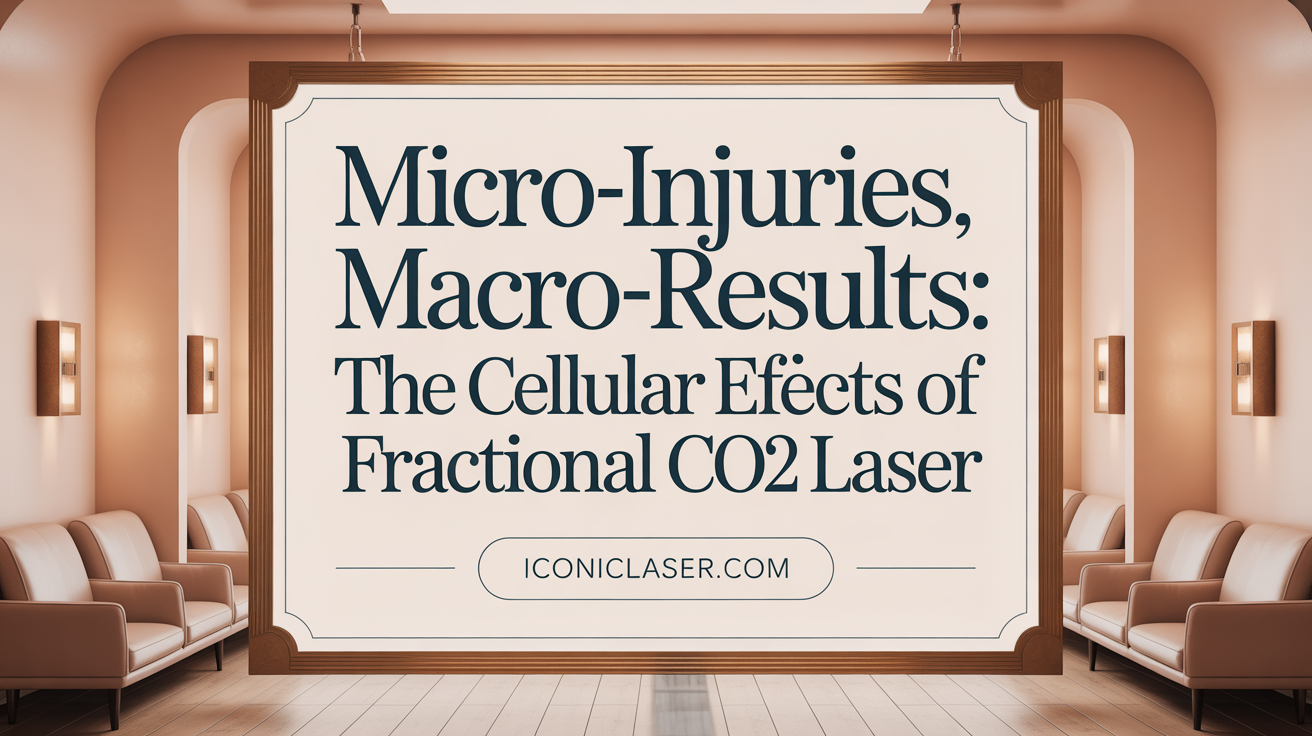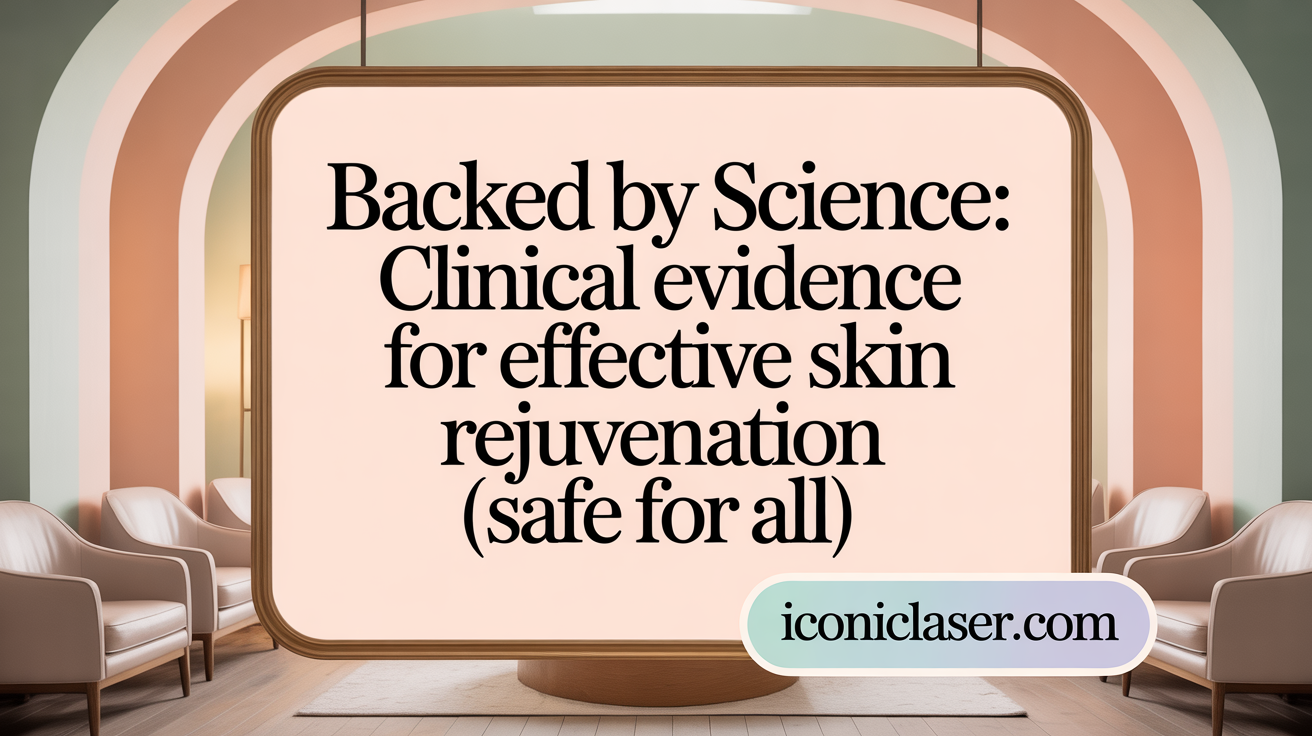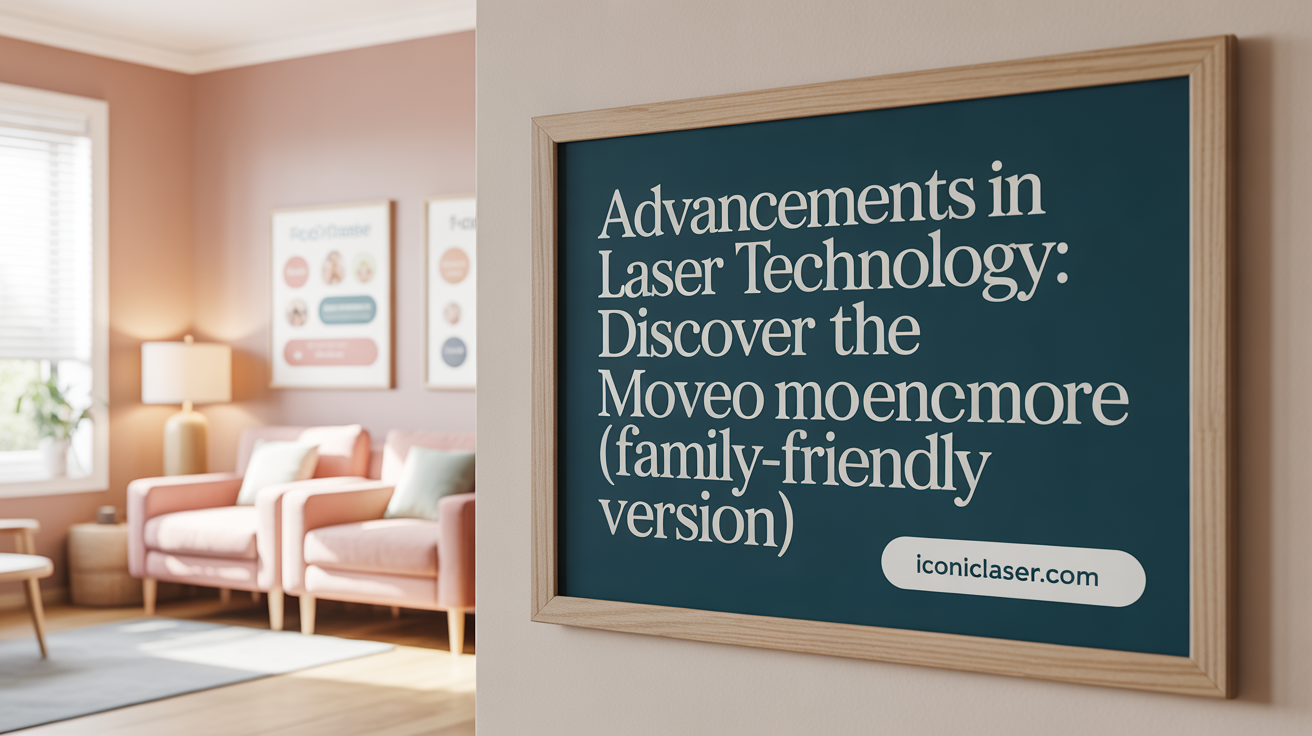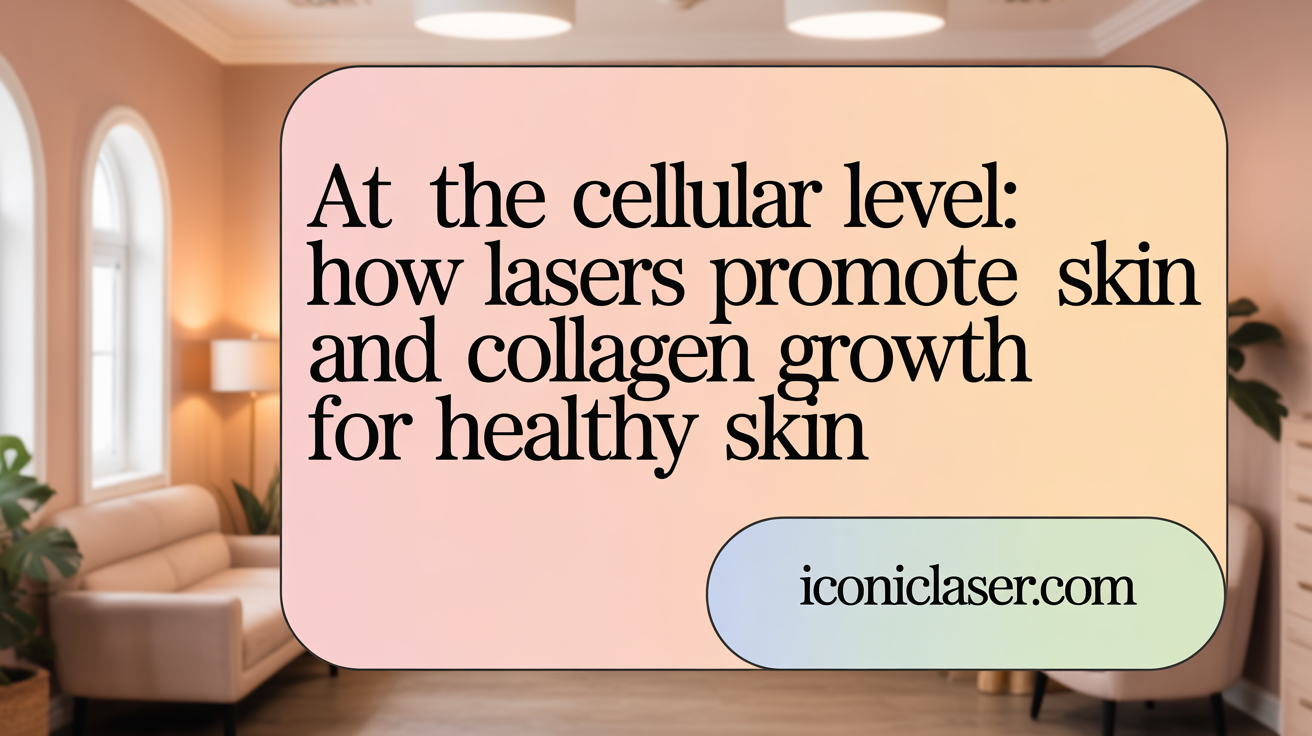Introduction to Fractional CO₂ Laser Rejuvenation
Fractional CO₂ laser rejuvenation has become a cornerstone in modern dermatologic and aesthetic treatments, offering a minimally invasive method to combat wrinkles, scars, and uneven skin textures. This article explores the mechanisms, clinical evidence, technological innovations, and safety data supporting its use, guiding patients and clinicians through the science behind skin remodeling and wrinkle reduction.
Mechanisms of Fractional CO₂ Laser Skin Rejuvenation

What is fractional CO₂ laser skin rejuvenation and how does it work?
Fractional CO₂ laser skin rejuvenation is a minimally invasive procedure that utilizes a laser emitting at a wavelength of 10,600 nm. This wavelength is specifically absorbed by water within the skin tissues, allowing the laser to create tiny, controlled zones of thermal injury called microthermal treatment zones (MTZs). These zones are strategically targeted to induce controlled damage while sparing surrounding tissue, which accelerates healing.
The laser's energy causes localized heating of skin cells, resulting in collagen denaturation at temperatures around 66.8°C. This process triggers the skin's natural wound-healing response, which includes collagen contraction and subsequent new collagen production—known as neocollagenesis. The contraction of existing collagen and formation of new collagen fibers lead to tighter, smoother, and more youthful skin.
The microthermal treatment zones stimulate the skin’s repair mechanisms, promoting skin renewal and restructuring. Over time, this process reduces fine lines, wrinkles, scars, and pigmentation issues. The effects of this therapy typically develop gradually over several months, with continued collagen remodeling offering ongoing skin improvement.
Overall, fractional CO₂ laser treatment offers an effective solution for skin rejuvenation by inducing precise micro-injuries that activate the body’s regenerative processes, leading to improved skin texture, elasticity, and appearance.
Clinical and Scientific Evidence Supporting Effectiveness

What clinical and scientific evidence supports the effectiveness of fractional CO₂ laser for wrinkle reduction and skin renewal?
Numerous clinical trials and peer-reviewed studies confirm the benefits of fractional CO₂ laser treatments. These studies show that the laser effectively diminishes wrinkles, enhances skin elasticity, and promotes overall skin renewal. The laser works by emitting a wavelength of 10,600 nm, which is highly absorbed by water in the skin tissue. This results in precise thermal injury that denatures collagen fibers and stimulates the body's natural healing response.
Scientific research, including histologic and molecular analyses, demonstrates that laser therapy activates skin repair pathways, leading to increased collagen and elastin production. These biological changes contribute to improved skin texture and firmness. Histological examination confirms that micro-injuries created by the laser encourage collagen remodeling, although the degree of visible improvement can vary based on treatment parameters.
Over the past 30 years, clinical experience and ongoing research have affirmed the safety and efficacy of fractional CO₂ laser therapy. Advances in treatment protocols—such as optimized laser settings, precise delivery systems, and comprehensive post-treatment care—have minimized adverse effects while maximizing rejuvenation outcomes.
Expert panels and clinical guidelines recommend fractional CO₂ laser treatment as a reliable method for wrinkle reduction and skin enhancement. The combination of scientific understanding and extensive clinical validation strongly supports its continued use in cosmetic dermatology.
Overall, the body of evidence underscores that fractional CO₂ laser therapy not only provides effective skin rejuvenation but also maintains a high safety profile for suitable candidates.
Technical Innovations: Exploring the Moveo Mode and Other Advanced Technologies

What technical advancements and treatment modes, such as Moveo mode, are available in fractional CO₂ laser technology?
Recent years have seen significant progress in fractional CO₂ laser systems, notably with the development of the Moveo mode. This innovation incorporates advanced microbeam delivery technology that enables the laser to operate in an in-motion scanning pattern. Such a mode allows for a more continuous and even application of laser energy across the skin, which translates into faster treatment sessions.
Moveo mode utilizes smaller spot sizes and flexible pattern control, providing higher precision targeting of skin tissues. This not only ensures more effective collagen stimulation and skin resurfacing but also enhances patient comfort by reducing treatment time and minimizing thermal damage.
In addition to Moveo mode, several other technological advancements have enhanced the versatility and safety of fractional CO₂ lasers. Devices now incorporate multiple emission modes such as High Pulse, DEKA Pulse, and Smart Pulse, which tailor laser energy delivery according to specific skin concerns and treatment depths. These programmable options allow clinicians to customize treatments for skin rejuvenation, scar remodeling, or pigmentation issues.
Advanced pulse shape design helps optimize tissue interaction, decreasing adverse effects like erythema and hyperpigmentation, especially in darker skin tones. Furthermore, the advent of microbeam patterning, including micro-ablative and deep dermal modes, offers various levels of skin injury to stimulate targeted collagen remodeling and repair.
Some systems, like the Tetra PRO, combine multiple emission modes within a single device, providing a comprehensive toolset for different indications. The inclusion of in-motion scanning not only speeds up procedures—reducing treatment time by about 30%—but also improves coverage uniformity, leading to predictable and consistent aesthetic outcomes.
In summary, the latest advancements in fractional CO₂ laser technology, exemplified by Moveo and other innovations, have expanded treatment possibilities. They contribute to more efficient procedures, enhanced safety profiles, and better customization to meet individual patient needs.
Cellular and Tissue-Level Effects Promoting Skin Renewal

How does fractional CO₂ laser treatment promote skin renewal at the cellular and tissue levels?
Fractional CO₂ laser treatment advances skin rejuvenation by strategically inducing micro-injuries in specific skin areas. The laser, with a wavelength of 10,600 nm, is highly absorbed by water within the skin, allowing it to precisely vaporize targeted tissue while sparing surrounding skin. This results in the formation of tiny, controlled micro-ablative columns (MACs) that penetrate the epidermis and superficial dermis.
These micro-injuries trigger the body’s natural wound-healing processes. The thermal effects cause collagen denaturation and contraction, which immediately tightens the skin. In response, fibroblasts—specialized cells responsible for producing collagen and elastin—are activated. This activation promotes the synthesis of new extracellular matrix components, including collagen fibers and elastin proteins.
As healing progresses, these biochemical and cellular activities lead to neocollagenesis, where new collagen fibers form, and elastin remodeling that enhances skin elasticity. The micro-beams' thermal injury also stimulates residual tissue repair mechanisms, encouraging the replacement of damaged tissue with healthier, more structured skin.
Histologically, this process creates residual thermal zones that promote micro-scarring and tissue remodeling, resulting in improved skin texture, increased firmness, and a more even skin tone. Over several months, these changes translate into visibly smoother and more youthful-looking skin, with minimized fine lines, wrinkles, scars, and pigmentation irregularities.
In summary, fractional CO₂ laser therapy effectively promotes skin renewal by creating micro-ablative channels and thermal injury, which activate fibroblasts, enhance extracellular matrix production, and lead to durable collagen and elastin remodeling.
Expected Results and Cosmetic Benefits
What are the expected results and benefits following fractional CO₂ laser skin rejuvenation treatment?
Fractional CO₂ laser skin rejuvenation is highly effective in targeting a range of skin concerns. Patients typically notice a significant reduction in fine lines, wrinkles, and sun damage. The procedure stimulates the skin's natural collagen production, which leads to firmer, smoother, and more youthful appearances.
One of the primary benefits is the improvement in skin texture and tone. The treatment helps diminish scars from acne, chickenpox, or trauma, making scars less visible. It also reduces age spots and uneven pigmentation, resulting in a more uniform skin coloration.
Results usually become apparent within a few weeks post-treatment, with continued improvement over the following months as collagen remodeling occurs. Most of these benefits are long-lasting, often extending up to a year or more, especially when patients follow recommended skincare routines and sun protection measures.
This minimally invasive option offers several advantages over traditional methods. It can improve skin elasticity and overall rejuvenation, providing a more youthful, refreshed look. Its efficacy in skin renewal, combined with manageable downtime, makes fractional CO₂ laser an appealing choice for those seeking effective skin rejuvenation with lasting effects.
Efficacy and Safety Data from Clinical Studies
What data is available regarding the efficacy and safety of fractional CO₂ laser treatments?
Clinical studies consistently demonstrate that fractional CO₂ laser treatments are highly effective for skin rejuvenation and scar treatment. These laser therapies stimulate collagen and elastin production, leading to improvements in skin texture, reduction of wrinkles, scars, and pigmentation, and overall skin tightening.
In a comprehensive review, patients showed significant aesthetic improvements as measured by standardized scales such as the Global Aesthetic Improvement Scale (GAIS). Both patient self-assessments and investigator ratings confirmed high satisfaction levels, with notable reductions in wrinkle depth and scar visibility.
Pain levels experienced during treatment were comparable across different protocols, with most patients reporting mild, manageable discomfort. Post-treatment side effects are generally mild and transient, predominantly involving erythema, edema, and slight hyperpigmentation, which typically resolve within days to a couple of weeks.
Adverse effects such as prolonged erythema or hypopigmentation are rare, especially when proper treatment protocols, including skin preconditioning and post-care, are followed. Long-term safety profiles are favorable, with no reports of serious or lasting adverse effects in the reviewed studies.
Additional clinical parameters, like the use of precise laser settings and tailored treatment depths, optimize efficacy while minimizing risks. Combining fractional CO₂ laser therapy with other procedures, such as platelet-rich plasma (PRP), has been shown to enhance skin regeneration further.
In summary, the evidence from multiple clinical trials and long-term follow-ups underpins the safety and effectiveness of fractional CO₂ laser treatments for facial rejuvenation, making it a reliable choice for a variety of skin concerns.
Overview of clinical evidence in a tabular format
| Aspect | Findings | Additional Details |
|---|---|---|
| Effectiveness | Significant improvements in skin texture, scars, and wrinkles | Assessed by GAIS and patient satisfaction scores |
| Patient Experience | Mild discomfort, similar across modes | No significant difference in pain levels |
| Short-term Side Effects | Erythema, edema, transient hyperpigmentation | Resolution within days to weeks |
| Long-term Safety | No serious adverse effects reported | Remains safe in long-term follow-up |
| Protocol Optimization | Suitable settings reduce side effects and enhance results | Combining with PRP increases benefits |
| Overall Conclusion | Proven safe and effective with minimal risks | Recommended for skin rejuvenation and scar treatment |
Pre-Treatment and Post-Treatment Guidelines to Maximize Safety and Outcomes
What pre-treatment guidelines should be followed to ensure the efficacy and safety of fractional CO₂ laser procedures?
Prior to undergoing a fractional CO₂ laser procedure, patients need to prepare their skin properly to achieve optimal results and reduce risks. It is recommended to avoid sun exposure, tanning beds, and photosensitizing medications for at least 2 to 3 weeks before treatment. Patients should also discontinue harsh skincare products such as retinoids, acids, and exfoliants at least one week prior to the procedure to minimize irritation.
Additionally, informing the healthcare provider about medical history is crucial, especially if there is a history of herpes labialis, shingles, or blood-thinning medication use. Adequate skin preparation involves using a broad-spectrum SPF 30+ sunscreen daily, staying well-hydrated, and following any specific instructions provided by the clinician. This minimizes the risk of adverse effects like hyperpigmentation or scarring.
On the day of treatment, the skin should be thoroughly cleaned and free of makeup, creams, or lotions. Patients may be advised to take analgesics or applying numbing creams beforehand to ease discomfort. Ensuring the skin is well-hydrated helps facilitate a smoother procedure.
Post-treatment, care involves covering the treated area with petroleum jelly or an antibacterial ointment to support healing. Patients should avoid sun exposure, wear protective clothing, and use cold compresses to reduce swelling. Gentle cleansing with mild soap and avoiding irritants or active skincare ingredients helps prevent complications. Regular monitoring is essential, with attention to signs of infection, increased pain, or unusual drainage.
Maintaining ongoing sun protection and skincare routines—including consistent use of high-SPF sunscreen and moisturizer—helps prolong the results. Follow-up visits may be scheduled to assess healing progress and determine the need for additional treatments. Adhering to these guidelines enhances safety, minimizes side effects, and supports the longevity of skin improvements after fractional CO₂ laser therapy.
Combination Therapies and Enhanced Protocols to Boost Outcomes
How does combining platelet-rich plasma (PRP) with fractional CO₂ laser enhance skin rejuvenation?
Using PRP alongside fractional CO₂ laser treatments can significantly improve results. PRP supplies growth factors that promote faster collagen remodeling and skin healing. When combined, these therapies boost skin tightening, reduce scars, and improve overall texture more effectively than either approach alone.
What is the role of fractional picosecond lasers in conjunction with fractional CO₂ treatments?
Fractional picosecond lasers target different skin issues like pigmentation and enlarged pores, complementing the collagen-boosting effects of fractional CO₂ laser. Picosecond lasers produce micro-injuries that stimulate skin renewal with minimal downtime, enhancing the overall rejuvenation process.
How are sequential modes of fractional laser used for better outcomes?
Clinicians often combine deep and active modes of laser treatment in sequence. Deep mode stimulates dermal collagen production, while active mode helps in superficial epidermal renewal. This layered approach addresses both surface imperfections and underlying skin structure, resulting in more comprehensive skin improvement.
What are the advantages of combining different fractional laser settings for scar and wrinkle treatment?
The synergy from combining various laser modes accelerates tissue repair and collagen reorganization. These protocols lead to more noticeable reductions in scars and wrinkles, with patients enjoying faster recovery and more durable results.
| Therapy Type | Main Focus | Benefit | Typical Use Case |
|---|---|---|---|
| PRP + Fractional CO₂ | Collagen remodeling | Enhanced skin elasticity and scar healing | General skin rejuvenation, scar treatment |
| Picosecond Laser | Pigmentation and pores | Minimal downtime, improved skin tone | Melasma, enlarged pores |
| Sequential Deep & Active CFD | Dermal & epidermal renewal | Better wrinkle and scar reduction | Severe facial aging, deep scars |
| Combined Modalities | Multi-layer correction | Accelerated and more durable results | Complex skin aging cases |
Long-Term Benefits, Recovery, and Patient Experience
How long do the results of fractional CO₂ laser treatments last, and what maintenance might be necessary?
Fractional CO₂ laser skin rejuvenation typically provides results that last about one year. To maintain optimal skin appearance, some patients opt for periodic touch-up treatments. Continuous skincare routines, including diligent sun protection with SPF and the use of moisturizers or retinoids, help prolong the benefits of the procedure.
What is the typical recovery timeline and what symptoms are common during healing?
Most patients experience a recovery period of around two weeks. During this time, redness, swelling, and mild discomfort are common. Skin may appear red or slightly swollen for several days, often peaking within the first few days post-treatment. Transient hyperpigmentation can occur but generally resolves spontaneously within approximately two weeks. Complete skin renewal and full healing typically take about 7 to 10 days.
How is patient comfort managed during and after the procedure?
Patients usually receive topical anesthetics before treatment to minimize discomfort. During the procedure, sensations of heat or mild pinpricks are common but tolerable for most. Post-procedure, recommended strategies include using soothing creams, avoiding sun exposure, and applying high-SPF sunscreen. Physical activities are limited for at least five days, and avoiding swimming pools or saunas for 2–3 weeks helps prevent infection and irritation.
How does the treatment impact quality of life and can it delay more invasive procedures?
Many patients report significant improvements in skin texture, tightness, and overall appearance, leading to increased confidence and satisfaction. The minimal downtime and non-invasive nature of fractional CO₂ laser treatments make them appealing alternatives to surgical procedures. For suitable candidates, these treatments can delay or defer the need for more invasive interventions like facelifts, providing a rejuvenated appearance with lower risk and shorter recovery.
Conclusion and Future Outlook
Fractional CO₂ laser rejuvenation has established itself as a scientifically validated, safe, and effective treatment for wrinkle reduction and skin renewal. Supported by extensive clinical research and technological advancements—such as the innovative Moveo mode—this therapy offers rapid treatment times, minimal downtime, and profound skin remodeling at the cellular level. Proper patient selection, adherence to pre- and post-treatment protocols, and integration with complementary therapies further optimize outcomes. As research continues and devices evolve, fractional CO₂ laser therapy promises to remain a cornerstone in aesthetic dermatology, delivering lasting improvements and enhanced patient satisfaction.
References
- A faster CO2 fractional scanner system mode for skin rejuvenation. A ...
- Skin Rejuvenation and Renewal with CO2 Fractional Laser
- An update on fractional picosecond laser treatment: histology and ...
- Advancements in laser technologies for skin rejuvenation: A ...
- A systematic review and meta-analysis on the effects of the ultra ...
- Laser Skin Resurfacing: Benefits, Side Effects, and Average Cost
- Fractional CO2 Laser Skin Treatment | Guilford Dermatology
- Fractionated CO2 laser skin rejuvenation | Request PDF
- How Long Does It Take to Recover From Laser Skin Resurfacing?
